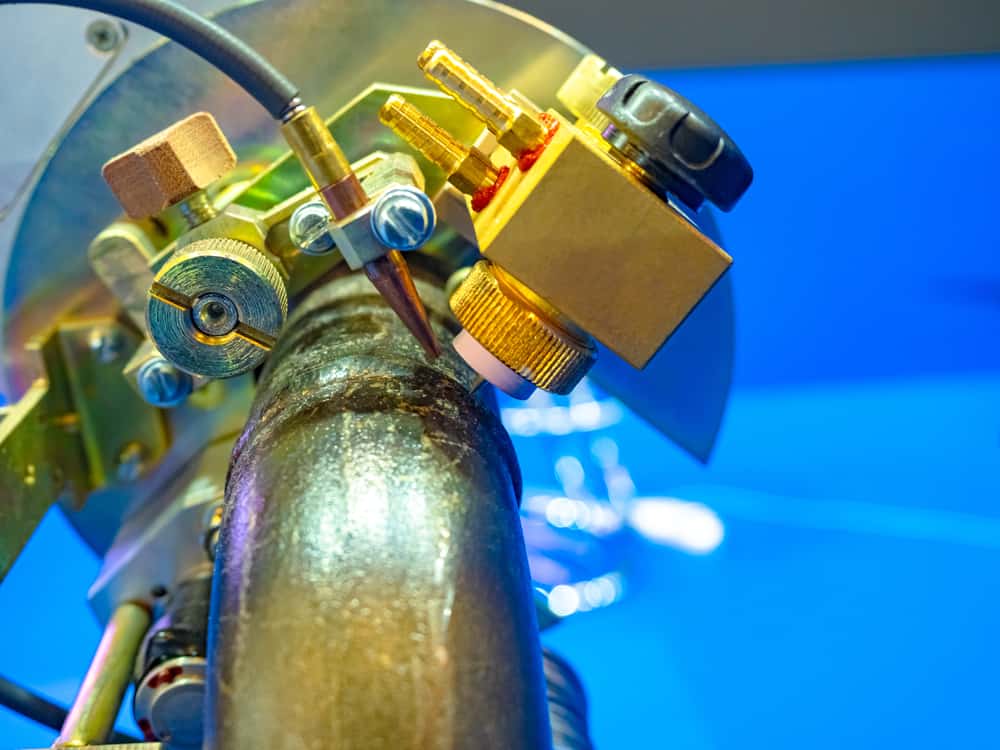
Across multiple industries, thin wall pipes have been used as a critical component where weight, corrosion, and cost are significant concerns—such as in the aerospace, automotive, and oil and gas industry. Additionally, in applications like heat exchangers and medical devices, these thin-walled pipes address the challenge of heat transfer and space limitations. So, welding these pipes successfully is critical.
However, the pipe’s relatively small wall thickness is a significant welding challenge for its propensity to burn through and distort without precision heat control. Such a task needs a combination of welders’ expertise and the correct welding method for success, i.e., welding with Gas Tungsten Arc Welding (GTAW).
Welding Thin Wall Pipe: Advantages of GTAW
The definition of “wall thickness” for a thin pipe often varies depending on the application requirement. For instance, in the oil and gas industry, the thickness of a thin wall pipe used in fluid transportation may be 1.02 mm or less, while in the aerospace industry, a “thin wall” can mean 0.25 mm or less.
Generally, thin wall pipes have thicknesses of less than 3% of their diameter, typically between 0.8 mm to 3 mm. When heat is applied to these pipes, they have less thermal mass to disperse the heat. This creates a localized area of rapid heating and cooling, leading to issues such as distortion, warping, and burn-through.
These challenges point to the significant control required to maintain heat input when welding thin wall pipes. This involves using appropriate welding techniques, parameters, and equipment that minimizes the risk of developing weld defects. GTAW is the ideal process for creating defect-free welds and producing clean and consistent results due to its capability of maintaining excellent heat control.
GTAW accomplishes quality welding of thin wall pipes in the following ways:
- Arc control: GTAW enables control of the arc’s intensity, exposure, and positioning, which facilitates precision heat input control.
- Gas shielding: Apart from protecting the weld pool from external contamination, the shielding gas also helps stabilize the arc. By reducing the heat transfer from the arc to the base metal, the shielding gas reduces the risk of burn-through when performing GTAW.
- Low heat input: GTAW has low heat input compared to processes like GMAW. This heat input is concentrated in a limited area around the arc, which creates a high-quality weld without issues like distortion or burn-through.
Orbital Welding Thin Wall Pipe For Enhanced Heat Control
For all kinds of pipe material, diameter, and thickness, orbital welding further improves the result of GTAW. The mechanized process, like orbital welding, uses a weld head that rotates around the pipe 360 degrees to produce a complete weld. The programmability of orbital welding allows the operators to set the weld parameter control to deliver consistent and uniform weld results.
Additional advantages of welding thin wall pipe with orbital GTAW include:
- The uniformity in travel speed and weld beading produces a high-quality weld free of defects.
- Orbital GTAW with heat control and shielding gas reduces the risk of distortion and warping when welding thin wall pipes.
- The automated process eliminates weld variability by removing operator error from the equation and ensures repeatability.
- Orbital welding ensures the correct distance between the base metal and electrode when striking an arc. This eliminates issues like tungsten inclusion or other damage to the thin-walled pipes.
- The automated method, with improved speed and efficiency, improves the productivity and safety of the welding process.
Orbital GTAW For Reliable Results
Consistency and precision are the key factors affecting the quality of the thin wall pipe weld. The semi-automated process, like orbital welding, can thus be reliably used, given its ability to control the weld parameters precisely. For this, orbital GTAW uses closed weld heads such as Model 8 and Model 9 series from AMI. These are specifically used for small pipes and tubes that enclose around the workpiece to create a shielded weld area. These weld heads’ “push-the-button-and-go” approach produces seamless results when welding thin wall pipes.
Additionally, power supplies and monitoring systems enable controlled input and continuous monitoring of the welding process to reduce weld discrepancies. The thin wall pipe thus fabricated is high quality and can meet the strictest of industry standards.
Meet quality requirements and production efficiency when welding thin wall pipe with orbital GTAW.
Arc Machines, Inc. offers specialized orbital welding solutions such as closed weld heads, power supplies, and monitoring systems for welding thin wall pipes to support heat input and other weld parameter control. For inquiries regarding products, contact sales@arcmachines.com. For service inquiries, contact service@arcmachines.com. Contact us to arrange a meeting. Arc Machines welcomes the opportunity to discuss your specific needs.




